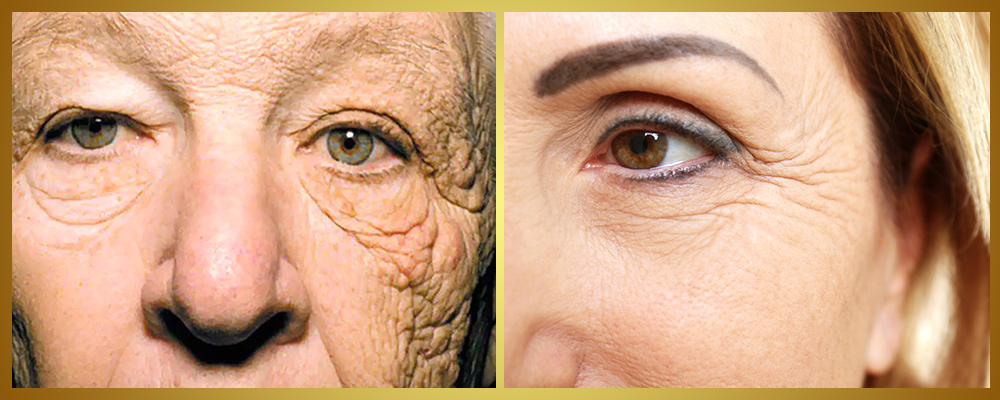Table of Contents
Wrinkles: Types, Symptoms and Causes
Wrinkles are a natural part of aging, commonly appearing on sun-exposed areas like the face, neck, hands, and forearms. Factors like pollution and smoking can accelerate their development. To help prevent wrinkles, it’s important to use sunscreen daily and quit smoking.
If wrinkles are a concern, various treatments are available to reduce their appearance, including medications, skin-resurfacing techniques, fillers, and surgery.
Symptoms

Wrinkles are lines and creases that form in your skin, often becoming more pronounced around the eyes, mouth, and neck.
When to see a doctor
If you are worried about the appearance of your skin, it is advisable to seek the advice of a dermatologist. A dermatologist can examine your skin, help you plan a skincare routine, and discuss treatment options for wrinkles.
Causes
Wrinkles occur for a variety of reasons, some of which are within your control, while others are not:
Age: As you age, your skin becomes less elastic, dry, and decreases in sebum and collagen, resulting in wrinkles and sagging.
Ultraviolet (UV) radiation: Exposure to ultraviolet rays from the sun and other sources accelerates skin aging by breaking down collagen and elastin, weakening skin structure
Smoking and Pollution: Smoking and air pollution contribute to premature skin aging.
Repetitive facial expressions: Regular facial movements, such as eye contact or smiling, produce fine lines over time. As your skin ages, it loses the ability to bounce back, making these lines permanent.
Family history: Genetics play an important role in the development of skin and wrinkles.
Diagnosis
Wrinkle diagnosis is a visual examination of your skin to look at wrinkles and wrinkles and determine their possible causes. Your doctor will also discuss your treatment history and what is important to you in terms of treatment effects, side effects and recovery time. This helps you determine the best treatment to meet your needs and objectives.
Treatment
a. Prescription Creams: Retinoids reduce fine wrinkles but may cause dryness and sun sensitivity.
b. Botox: Smooths wrinkles by relaxing muscles; effects last a few months. Possible side effects include headaches and bruising.
c. Chemical Peel: Removes top skin layers for smoother skin. Risks include scarring and color changes.
d. Facial Fillers: Plump wrinkles with fillers like Juvederm. Results last around six months. Possible side effects include bruising.
e. Laser Resurfacing: Improves skin texture using lasers; recovery times vary. Risks include scarring and color changes.
f. Deoxycholic Acid: Reduces double chin fat with multiple injections. Side effects include swelling and bruising.
g. Face-lift/Neck Lift: Surgery to lift and tighten skin. Risks include bleeding and long recovery times.
Consult your doctor to find the best treatment for your needs.




